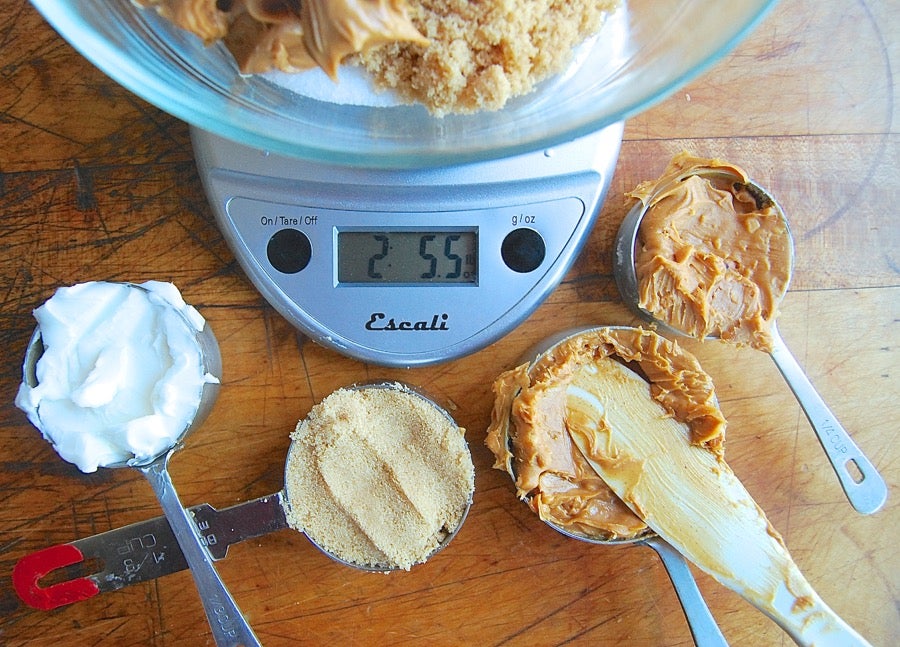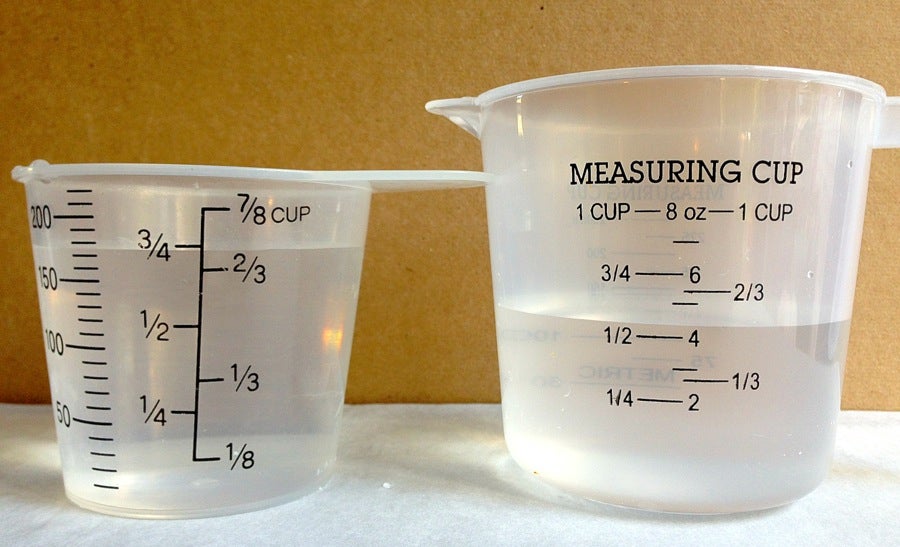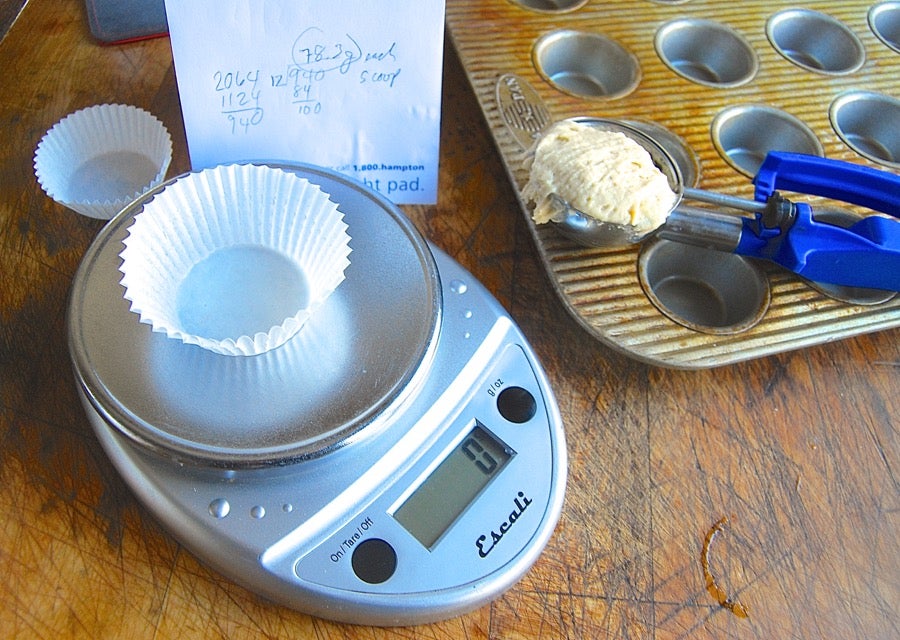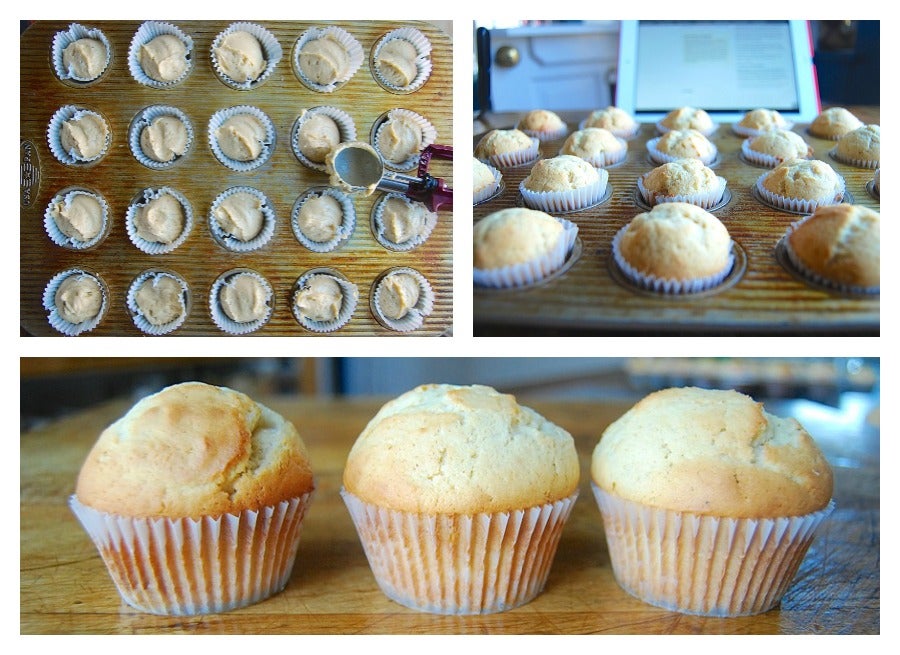


All right, I'm not usually this adamant, but I'm going to come right out and say it:
For best success, measure your ingredients with a scale, rather than measuring cups.
Hey, don't get me wrong. I know home bakers got along without scales for centuries.
Then again, we also got along without food processors and mixers, accurately calibrated ovens and digital thermometers and silicone spatulas. But isn't life in the kitchen easier – and food prep more pleasant – with these useful tools?
If you absolutely, positively love using your mom's measuring cups to bake a loaf of bread, then stick with them. They're a happy memento of the hours you and Mom spent in the kitchen together, a nostalgic connection to your earlier, simpler life.
But if you're interested in saving time; cutting back on cleanup; and almost certainly enjoying more consistent baking success, then I highly recommend baking with a scale.
It just might be the best $29.95 investment you've made in quite some time.
Here's why –
Fill a series of measuring cups with ingredients. Level them off. Scrape contents into the mixing bowl.
Or, scoop ingredients directly from the jar or canister into the mixing bowl.
Your choice.
First, how accurate are your liquid measuring cups? Do the test to find out.
See these two cups? I poured 6 ounces of water into each. The cup on the left looks fairly accurate. The one on the right? Not so much.
Second, while dry measuring cups are more likely to be accurate than liquid measuring cups (with their sometimes random line markings), a lot depends on how you fill the cup.
Do you scoop and tamp? Level off the top, or just kind of give it a shake? There's about 2 tablespoons difference between the cocoa in the cup on the left, and the one on the right.
We've found when measuring flour, the difference can be even more extreme… up to 3 to 4 tablespoons per cup. That means you might be adding up to 3/4 cup additional flour to a typical bread recipe. OUCH! Talk about dry, tough bread... For more on that, please see how to measure flour for best success.
Think muffins. Do you totally nail your portioning every single time. Or do you end up with some muffins small and pitiful looking – and some mushroom-capped and overflowing their cups?
Here's what to do for muffins, layer cakes, cookies, or any time you want to portion your dough or batter into finished treats that are all the same size:
•Know the weight of your mixing bowl before you start.
•Once you've mixed up your batter, put the bowl on the scale and weigh it.
•Subtract the weight of the bowl, to establish the weight of the batter.
•Do some simple arithmetic: divide the weight of the batter by the number of portions the recipe calls for (e.g., 12 muffins; 24 cupcakes; 2 round cake layers).
•Scoop out that amount of batter for each muffin (or cake layer, etc.)
The result? As you can see, pretty darned nice.
OK, I know you're wondering: these are our Doughnut Muffins (prior to their "dip" in melted butter and cinnamon-sugar), made into both mini muffins, and standard-size.
Serendipitously, the recipe makes the perfect amount of batter for 20 minis and six standards; I knew that ahead of time, because I weighed the batter. [Pats self on back.]

OK, you decide you want 18 muffins, instead of 12. Well, that's easy – just multiply everything by 1 1/2, right?
This Doughnut Muffin recipe calls for 1/4 cup each butter and vegetable oil; 1/2 cup granulated sugar, and 1/3 cup brown sugar.
Rather than get into multiplying fractions, I simply use gram amounts for each ingredient, do the basic arithmetic, then weigh everything into the bowl.
Or, if I didn't have a scale – "Hmmm, 1/4 x 1 1/2 = 3/8 cup. That's kind of between 1/3 and 1/2, isn't it? Or maybe I should use the 1/4-cup and fill it 1 1/2 times..." See how measuring by volume can lead you down the slippery slope to inaccuracy?
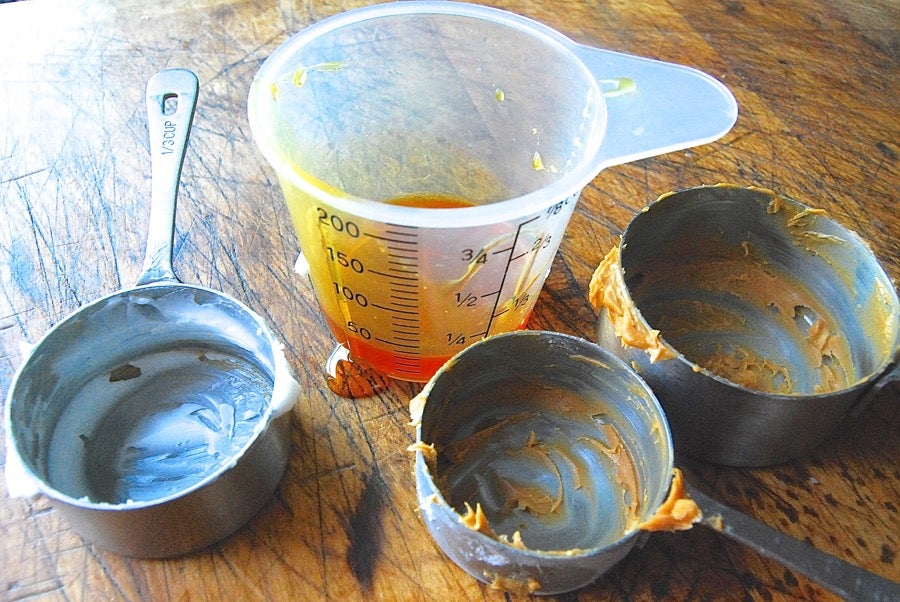
Is this what you typically end up with at the end of a relaxing, enjoyable baking project? Sink time, right? Or at a minimum, dishwasher space.
When you weigh ingredients, there are no measuring cups to clean. Full stop.
And that's where I'll leave you, as I go on to finish these peanut butter cookies I've been using as a demonstration. Just remember, my muffins and cookies turned out great – and I won't be washing any sticky measuring cups. Will you?
Do you use a scale for baking? Weigh in! Tell us in comments (below) why you bake with a scale.


